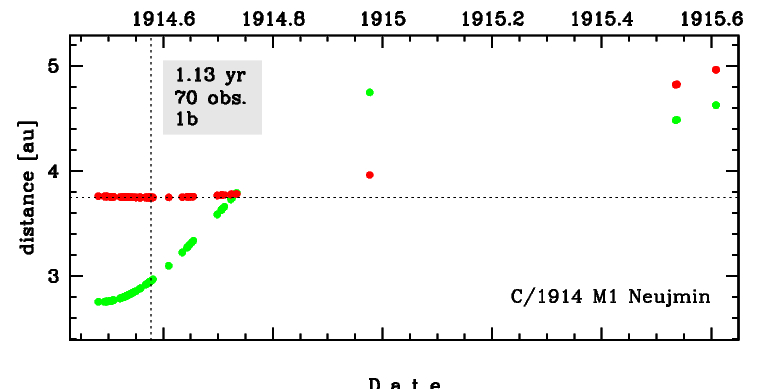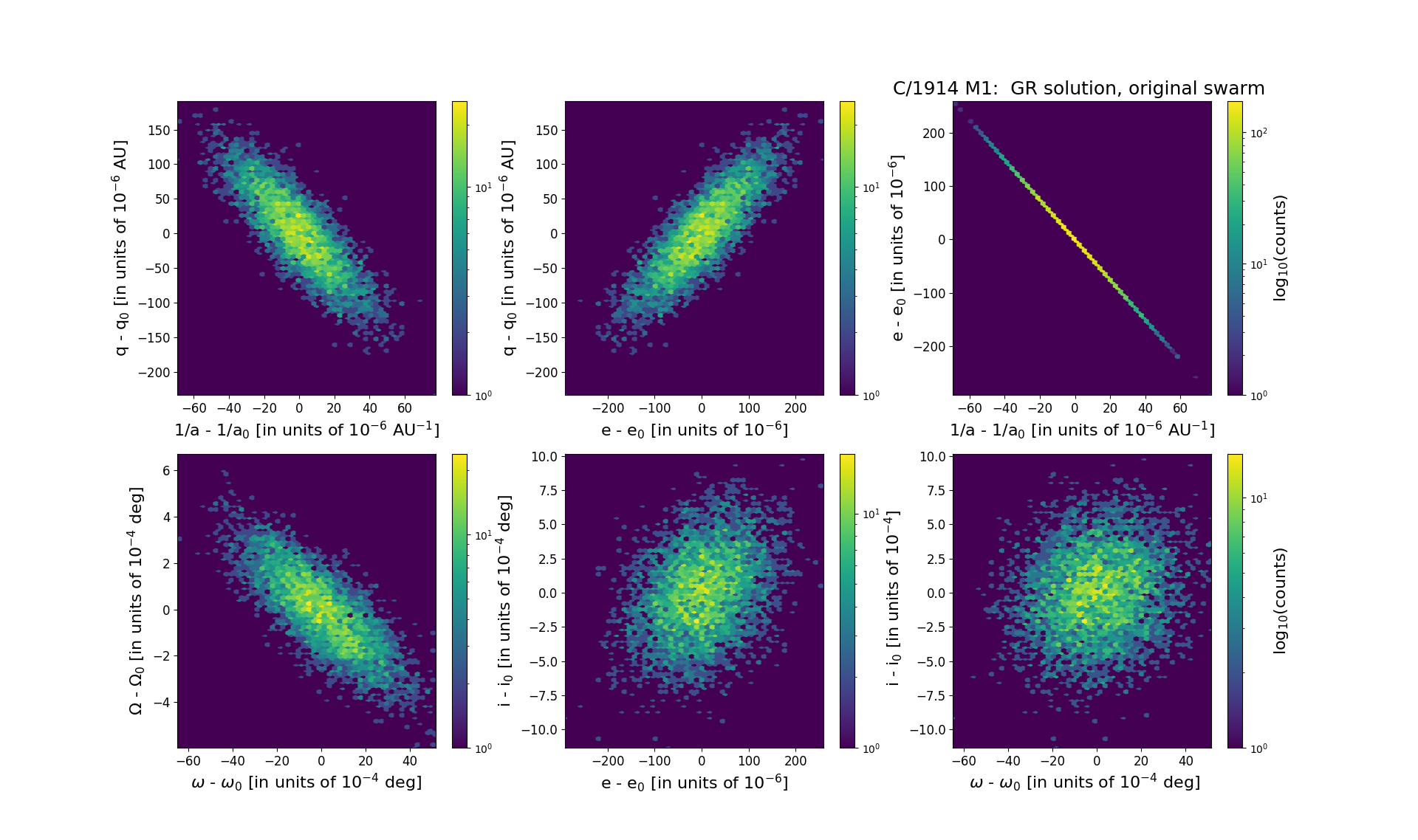C/1914 M1 Neujmin
more info
Comet C/1914 M1 was discovered on 24 June 1914, about one month before perihelion passage, and was last seen on 10 August 1915 [Kronk, Cometography: Volume 3].
This comet made its closest approach to the Earth on 25 June 1914 (2.75 au), that is the next day after its discovery.
Solution given here is based on data spanning over 1.13 yr in a range of heliocentric distances from 3.76 au through perihelion (3.75 au) to 4.06 au.
This Oort spike comet suffers very slight planetary perturbations during its passage through the planetary system.
More details in Królikowska et al. 2014 andKrólikowska and Dybczyński 2017
This comet made its closest approach to the Earth on 25 June 1914 (2.75 au), that is the next day after its discovery.
Solution given here is based on data spanning over 1.13 yr in a range of heliocentric distances from 3.76 au through perihelion (3.75 au) to 4.06 au.
This Oort spike comet suffers very slight planetary perturbations during its passage through the planetary system.
More details in Królikowska et al. 2014 andKrólikowska and Dybczyński 2017
| solution description | ||
|---|---|---|
| number of observations | 70 | |
| data interval | 1914 06 24 – 1915 08 10 | |
| data type | perihelion within the observation arc (FULL) | |
| data arc selection | entire data set (STD) | |
| range of heliocentric distances | 3.76 au – 3.75 au (perihelion) – 4.96 au | |
| detectability of NG effects in the comet's motion | NG effects not determinable | |
| type of model of motion | GR - gravitational orbit | |
| data weighting | NO | |
| number of residuals | 122 | |
| RMS [arcseconds] | 2.21 | |
| orbit quality class | 1b | |
| orbital elements (barycentric ecliptic J2000) | ||
|---|---|---|
| Epoch | 1611 02 25 | |
| perihelion date | 1914 07 30.52911800 | ± 0.01070500 |
| perihelion distance [au] | 3.74227102 | ± 0.00006815 |
| eccentricity | 0.99986307 | ± 0.00009344 |
| argument of perihelion [°] | 14.115408 | ± 0.002097 |
| ascending node [°] | 271.473680 | ± 0.000169 |
| inclination [°] | 71.078722 | ± 0.000424 |
| reciprocal semi-major axis [10-6 au-1] | 36.59 | ± 24.97 |
| file containing 5001 VCs swarm |
|---|
| 1914m1a5.bmi |

